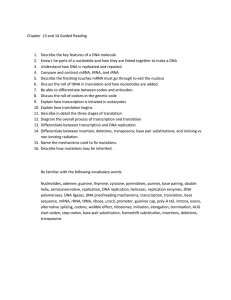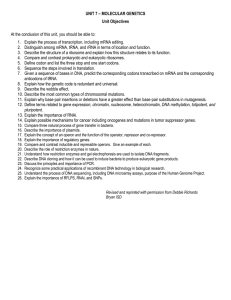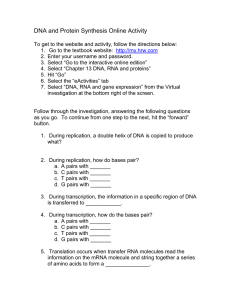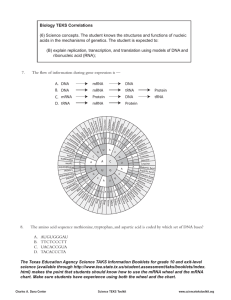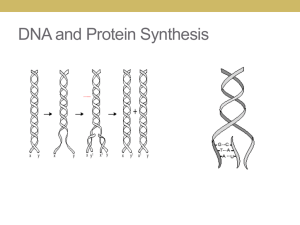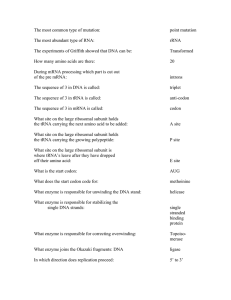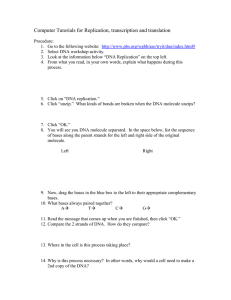Quiz 4 - Barley World
advertisement
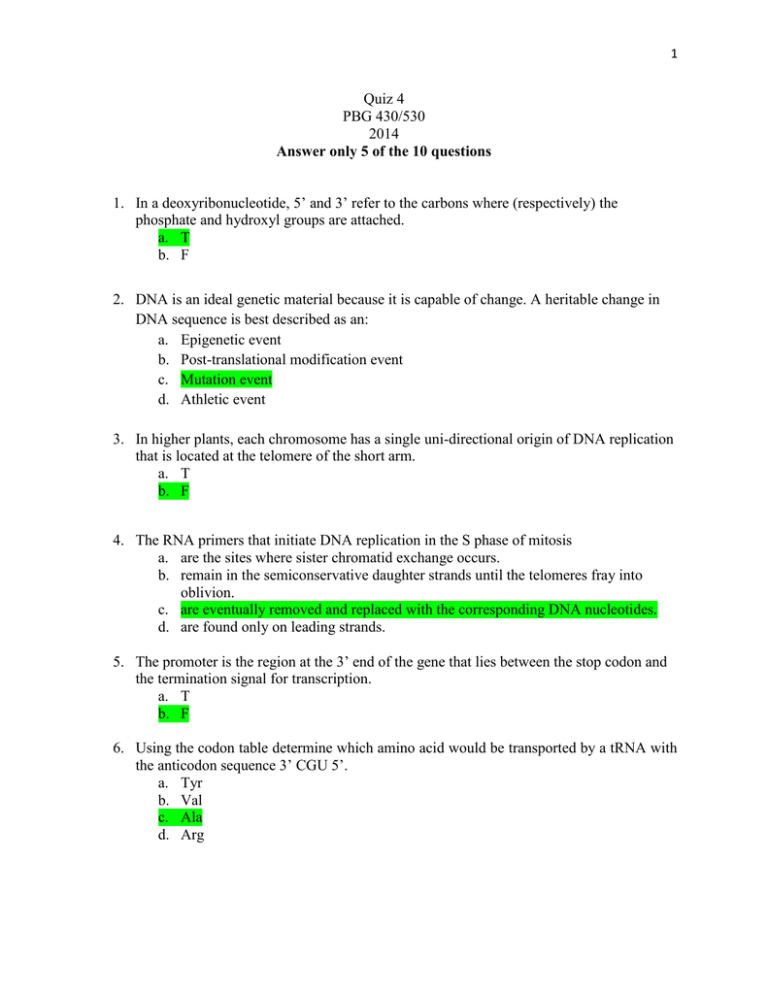
1 Quiz 4 PBG 430/530 2014 Answer only 5 of the 10 questions 1. In a deoxyribonucleotide, 5’ and 3’ refer to the carbons where (respectively) the phosphate and hydroxyl groups are attached. a. T b. F 2. DNA is an ideal genetic material because it is capable of change. A heritable change in DNA sequence is best described as an: a. Epigenetic event b. Post-translational modification event c. Mutation event d. Athletic event 3. In higher plants, each chromosome has a single uni-directional origin of DNA replication that is located at the telomere of the short arm. a. T b. F 4. The RNA primers that initiate DNA replication in the S phase of mitosis a. are the sites where sister chromatid exchange occurs. b. remain in the semiconservative daughter strands until the telomeres fray into oblivion. c. are eventually removed and replaced with the corresponding DNA nucleotides. d. are found only on leading strands. 5. The promoter is the region at the 3’ end of the gene that lies between the stop codon and the termination signal for transcription. a. T b. F 6. Using the codon table determine which amino acid would be transported by a tRNA with the anticodon sequence 3’ CGU 5’. a. Tyr b. Val c. Ala d. Arg 2 7. In the process of translation, the ribosome moves a. 5’ to 3’ on the mRNA. b. 3’ to 5’ on the mRNA. c. counterclockwise around the tRNA. d. 5’ to 3’ on the antisense DNA. 8. If you know the amino acid sequence of a polypeptide you can deduce the exact DNA code of the corresponding gene. a. T b. F 9. In the case of a codominant molecular marker visualized via electrophoresis, the expected phenotypic ratio in the doubled haploid progeny of the cross between two completely inbred lines will be a. 1:1 b. 1:2:1 c. 3:1 d. 9:3:3:1 10. At several points in this class, the point has been made that “Expected and observed ratios in cross progeny will be a function of: …………..” This statement is followed by a list of factors (a – e below). Which of the five factors best describes epistasis? a. The degree of homozygosity of the parents b. The generation studied c. The degree of dominance d. The degree of interaction between genes e. The number of genes determining the trait.

